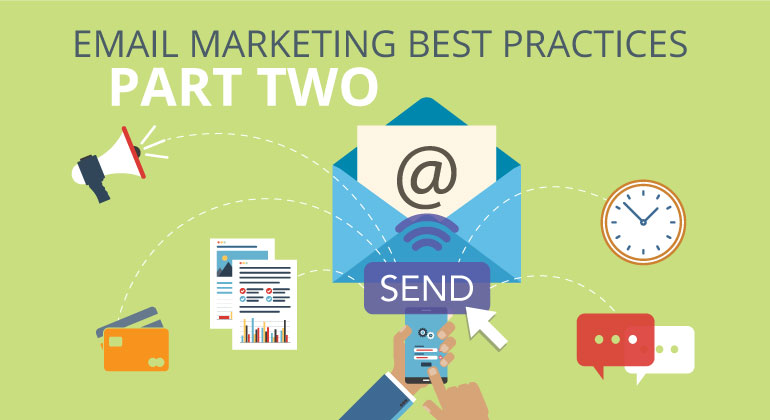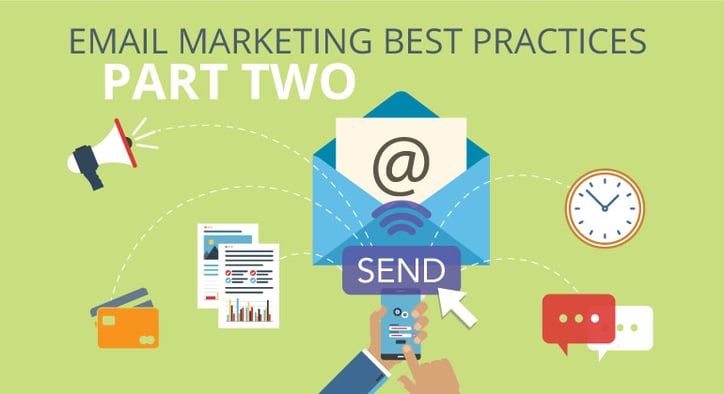Email Marketing Best Practices: Part 2

June 13, 2023
Inbound Marketing Email Marketing

It is reported that 77% of marketers have seen an increase in email engagement over the last 12 months. It’s easy to understand why companies continue to utilize email as a critical and strategic component of their marketing plan.
Here are email marketing best practices to take into account in developing and distributing your upcoming email campaign, as well as post-email delivery rates.
General Guidelines
- Test your email with a friend or business associate to see if they can quickly identify the CTA—and if it sounds valuable
- Tie the email to the corresponding landing page very closely—headlines, copy and overall look and feel should be integrated
- Follow the same SEO rules for email as you would for website pages including keywords, anchor text for constructing the body of the message, images with alt-text tags, social media sharing buttons and so forth
Settings Recommendations
- Send the email from real person, avoiding “generic” email addresses such as “marketing@” or “sales@”
- Use preview text, include brief description at very top of each email as Outlook and Gmail show snippets
- Offer both plain text and HTML versions
- Always allow recipients the option to view email in web browser
- Test on multiple email clients to preview appearances across different mobile devices
- Avoid CSS shorthand—some email clients won’t support shorthand properties such as font or padding
- Avoid external or internal CSS classes or IDs, use inline CSS instead
- Avoid Javascript or other dynamic scripts—email clients block this functionality
- Use plain text-style bullet points—HTML-style bullets break or become wonky
- Avoid Flash or video embeds since the ability to view rich media in email is turned off by default in most email clients
- Include an image of your video player with a play button linked to your website page
- Avoid invisible text—it’s an instant red flag for SPAM filters
Delivery Rates
- Calculate delivery rate metrics to see the percentage of emails you sent that actually got through to the recipients:
Number of emails sent – (hard + soft bounces)
Number of emails sent
- Calculate the percentage of unique clicks in the links your email receives:
Unique Clicks on all links – multiple clicks of a single recipient
Number of emails delivered
- Remove hard bounces from your list—they are permanent delivery problems
- Monitor soft bounces after a couple of emails—they may reflect a temporary issue such as a full inbox or a server issue






